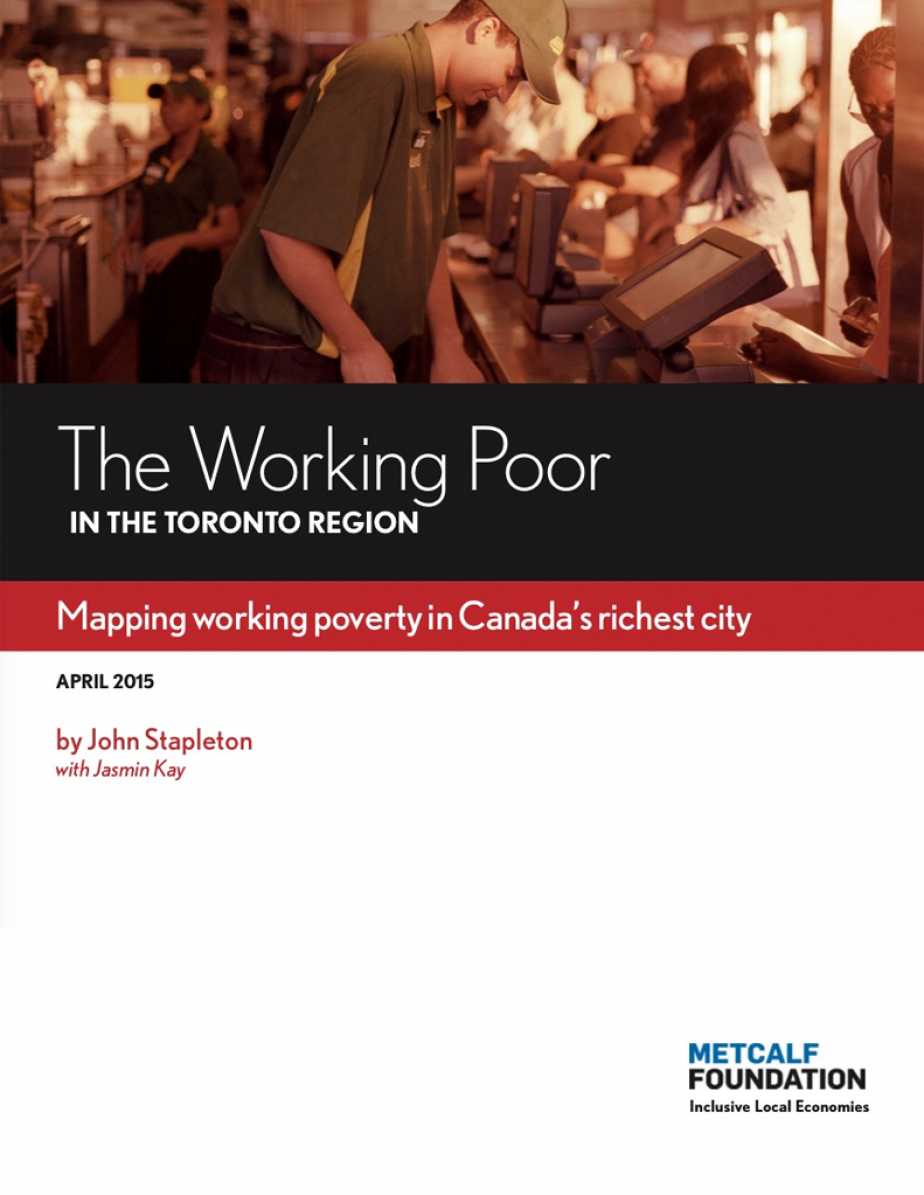Written by Metcalf Fellow John Stapleton, with contributions by Dr. Carl James and Dr. Kofi Hope, The Working Poor in the Toronto Region: A closer look at the increasing numbers is Metcalf’s third in a series of reports aimed at illuminating the realities of working poverty in our region and providing an overview of the factors driving the continued rise in numbers.
Drawing on census data from 2016, the report shows that from 2006 to 2016 working poverty increased in almost all of Canada’s large metropolitan areas. In the Toronto region, working poverty continued to expand northwards growing by 27%, to 170,000 individuals, with almost every census tract north of Hwy. 401 exhibiting more than 5% of the working-age population to be working poor. This growth is troubling, especially given the relatively strong employment figures in 2016 and increases in the minimum wage and new government transfers.
The return of the mandatory long-form census, in 2016, has been critical to help illustrate both geographic and demographic characteristics of the working poor. By disaggregating the data, Stapleton identifies how incidents differ according to gender, age, education, and ethno-cultural and immigration status. For example, in the Toronto CMA, 46% of the working-age population is racialized, yet 63% of the working poor are racialized. Some of the highest rates of working poverty are among Toronto’s Black communities. Dr. James and Dr. Hope provide contextual framing for how this data might be interpreted.
The goal with this report is to provide insight into Toronto’s working poor in the hope that this work provokes not only further research and analysis but also organizing and action on the divide in our labour force, and the need for higher wages, better job stability, anti-racism strategies, and more effective support programs.
Below are the two previous reports in The Working Poor in the Toronto Region series.






